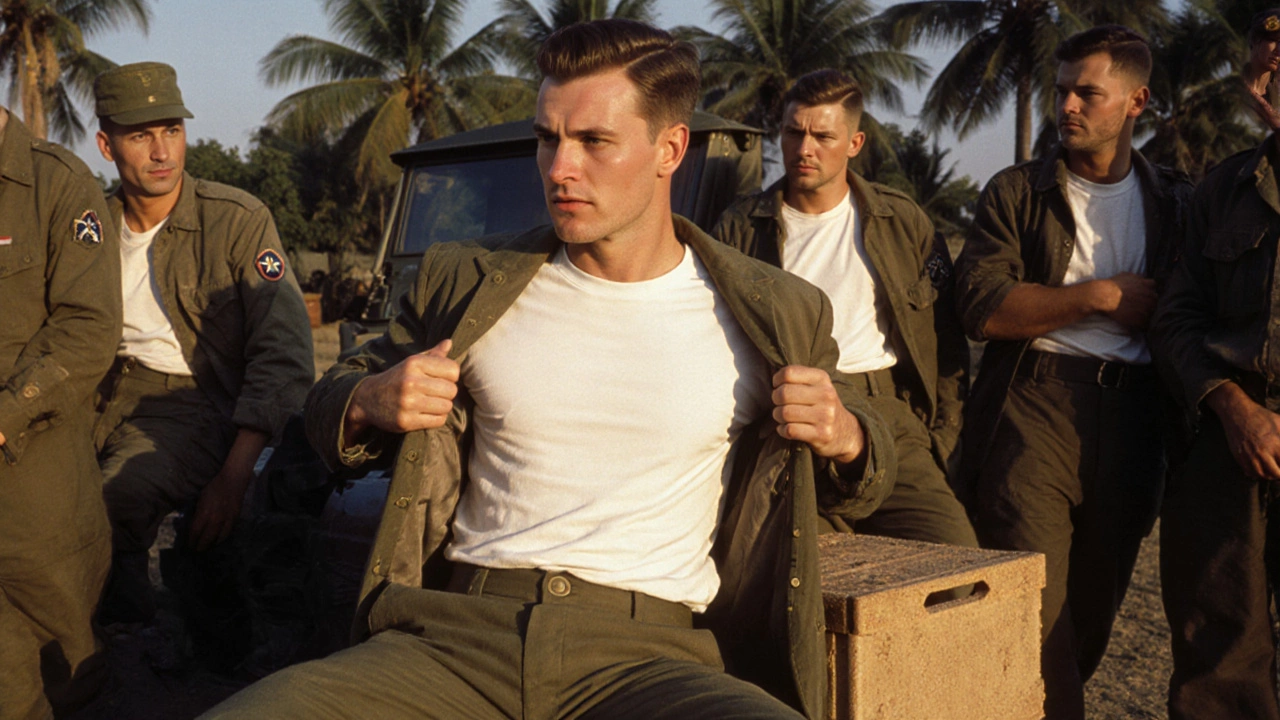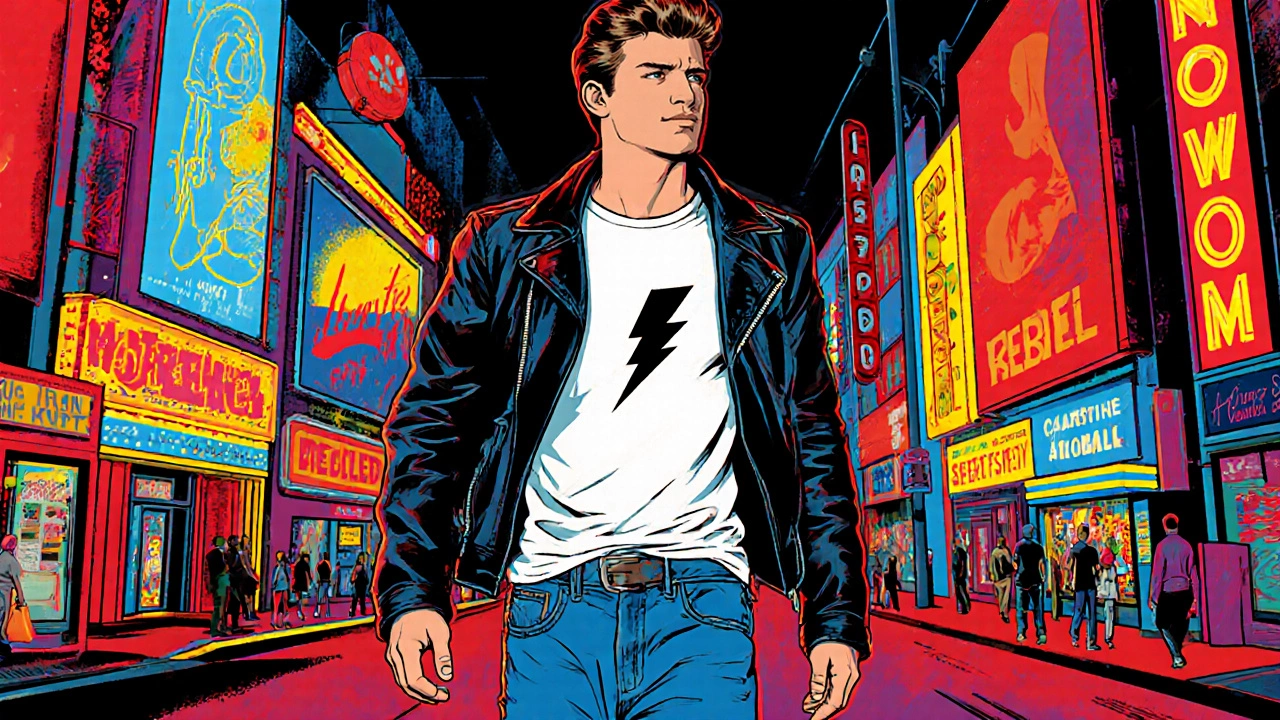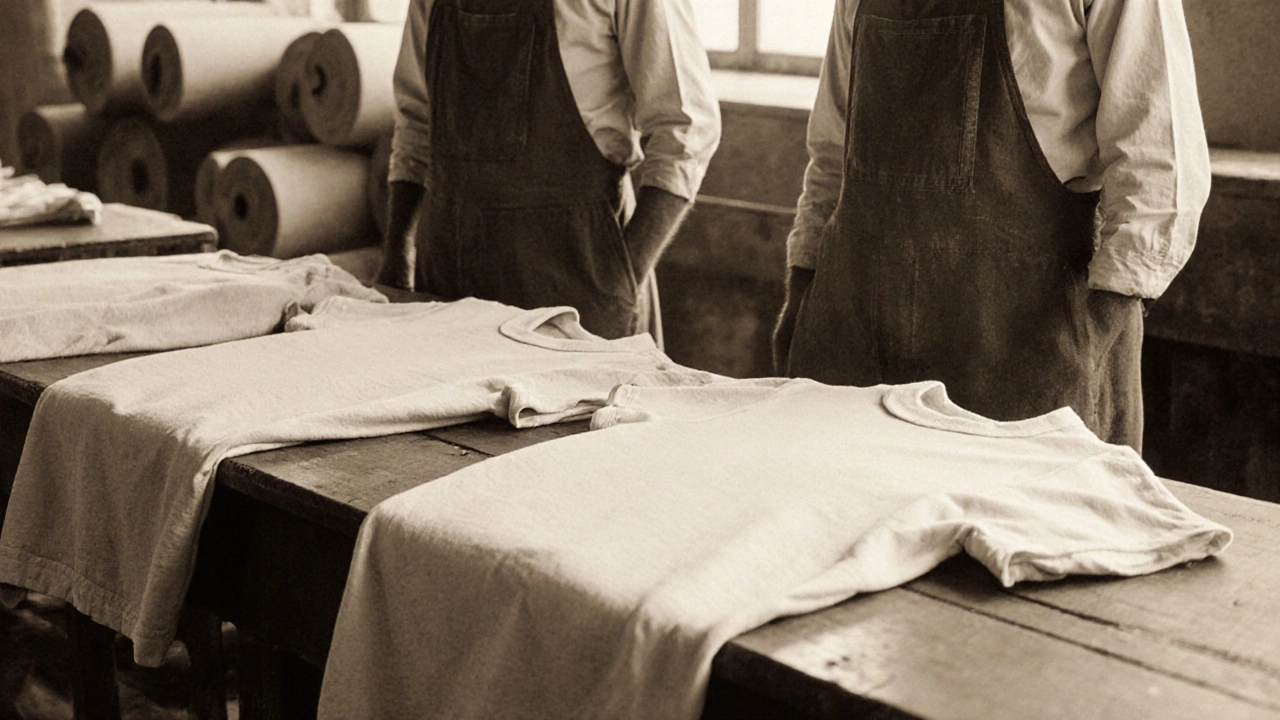T-shirt vs Polo Shirt Comparison Tool
Compare T-shirt vs Polo Shirt
Comparison Results
T-shirt
Polo Shirt
Ever wondered why that simple piece of clothing is called a T‑shirt? The answer isn’t just a typo or a random label - it’s a story that weaves together early 20th‑century workwear, military supply chains, and a pop‑culture boom that turned a plain garment into a global icon.
T‑shirt is a cotton shirt with a straight cut that resembles the shape of the capital letter "T" - a vertical body and short sleeves that form the crossbar. It first appeared as an undergarment for workers and soldiers before becoming the go‑to casual staple we all recognize today.
The Early Shirt Shapes That Preceded the T‑shirt
Before the T‑shirt, men wore loose, collar‑less tops called crew neck shirts. These were popular among laborers in the 1900s because they were cheap, breathable, and easy to wash. Unlike the later T‑shirt, crew necks often featured a rounded neckline and a longer body that reached the hips.
At the same time, the polo shirt was emerging in England’s tennis circles. Polo shirts had a small collar and a buttoned placket, a design that signaled a slightly dressier vibe compared to the utilitarian crew neck.
How the ‘T’ Shape First Showed Up
In the United States, the early 1910s saw manufacturers experiment with cutting shirts without a collar and with short sleeves for better movement. The resulting silhouette - a straight vertical torso intersected by a short‑sleeve cross - naturally resembled the capital letter "T" when laid flat. Workers in factories and shipyards loved the simplicity, and the name stuck in factory gossip before it ever made it to a product catalog.
One key material that made the new shirt feasible was cotton. Its softness, wicking ability, and low cost meant the garments could be produced en masse without specialized tailoring.
Military Influence: The World War II Boost
During World War II, the US Army needed a lightweight, breathable undergarment for soldiers stationed in hot climates. The army contracted a few New York manufacturers to produce plain, collar‑less shirts that could be layered under the heavier uniform. These were officially labeled "undershirts," but soldiers on the ground began calling them "T‑shirts" because the shape was instantly recognizable.
American soldiers wore the shirts both on duty and off‑base. When they returned home after the war, they brought the habit of wearing T‑shirts as casual outerwear. The garment instantly associated itself with the rugged, no‑frills image of the veteran.

Post‑War Pop Culture and the Rise of the Graphic Tee
The 1950s saw Hollywood icons like Marlon Brando and James Dean sport plain white T‑shirts, reinforcing the idea that a simple tee could be a symbol of rebellion. In the 1960s, the graphic tee entered the scene when artists began printing slogans, band logos, and protest messages onto the fabric. This merging of fashion and self‑expression took the name "T‑shirt" from a functional label to a cultural shorthand.
By the 1970s, the fashion industry had embraced the T‑shirt as a canvas for designers. Brands like Adidas and later Gap released logo‑centric tees that sold in the millions, cementing the term in retail catalogues worldwide.
Modern Naming Conventions: Why the Name Stuck
Even as variations proliferated - think longline cuts, raglan sleeves, moisture‑wicking fabrics - the core name stayed the same because it communicates shape instantly. Retailers still separate crew neck from polo shirt in product listings, using the “T‑shirt” label for anything that matches the original cross‑bar silhouette.
Designers sometimes rebrand the garment as a "base layer" or "performance tee," but online shoppers continue to search for "T‑shirt" because it’s the most recognizable term across languages.

What the Name Tells Us About the Garment Today
Beyond shape, the word "T‑shirt" now hints at the garment’s cultural baggage: casual comfort, DIY spirit, and a platform for personal expression. When you buy a T‑shirt, you’re not just buying a piece of cotton; you’re tapping into a lineage that stretches from early 20th‑century factories to contemporary streetwear runways.
Understanding why it’s called a T‑shirt helps you appreciate the simple design choices that made the piece adaptable enough to survive more than a century of fashion cycles.
| Feature | T‑shirt | Polo shirt |
|---|---|---|
| Neckline | Crew neck (no collar) | Collared with small button placket |
| Sleeve length | Short sleeves (usually 2‑4 inches) | Short sleeves, sometimes longer |
| Typical fabric | Cotton, jersey blends, performance wicks | Cotton pique, polyester blends |
| Formality | Casual, everyday wear | Smart‑casual, can be office‑appropriate |
Quick Checklist: Spotting an Authentic T‑shirt
- Straight vertical body with short sleeves forming a cross‑bar shape.
- Crew‑neck without a collar.
- Typically made from cotton or a cotton blend.
- Label or product description explicitly says "T‑shirt".
Mini‑FAQ
Did T‑shirts originally have graphics?
No. Early T‑shirts were plain, solid‑colored undergarments. Graphic printing started in the 1960s as a form of self‑expression.
Why do some people call it a "tee"?
"Tee" is just a phonetic shortcut for "T‑shirt". It’s easier to say and has become common in casual conversation.
Are crew necks and T‑shirts the same?
All T‑shirts have a crew‑neck, but not every crew‑neck shirt qualifies as a T‑shirt. The defining factor is the short‑sleeve "T" silhouette.
When did women start wearing T‑shirts?
Women embraced the T‑shirt in the 1970s, when unisex fashion trends and the rise of casual work environments made the garment a gender‑neutral staple.
Do all T‑shirts have a straight cut?
Modern variations include fitted, oversized, and raglan styles, but the classic "T‑shape"-vertical torso plus cross‑bar sleeves-remains the core reference point.
Is the term "T‑shirt" used worldwide?
Yes, although some languages have local translations, the English phrase "T‑shirt" is globally recognized in fashion retail, e‑commerce, and pop culture.

